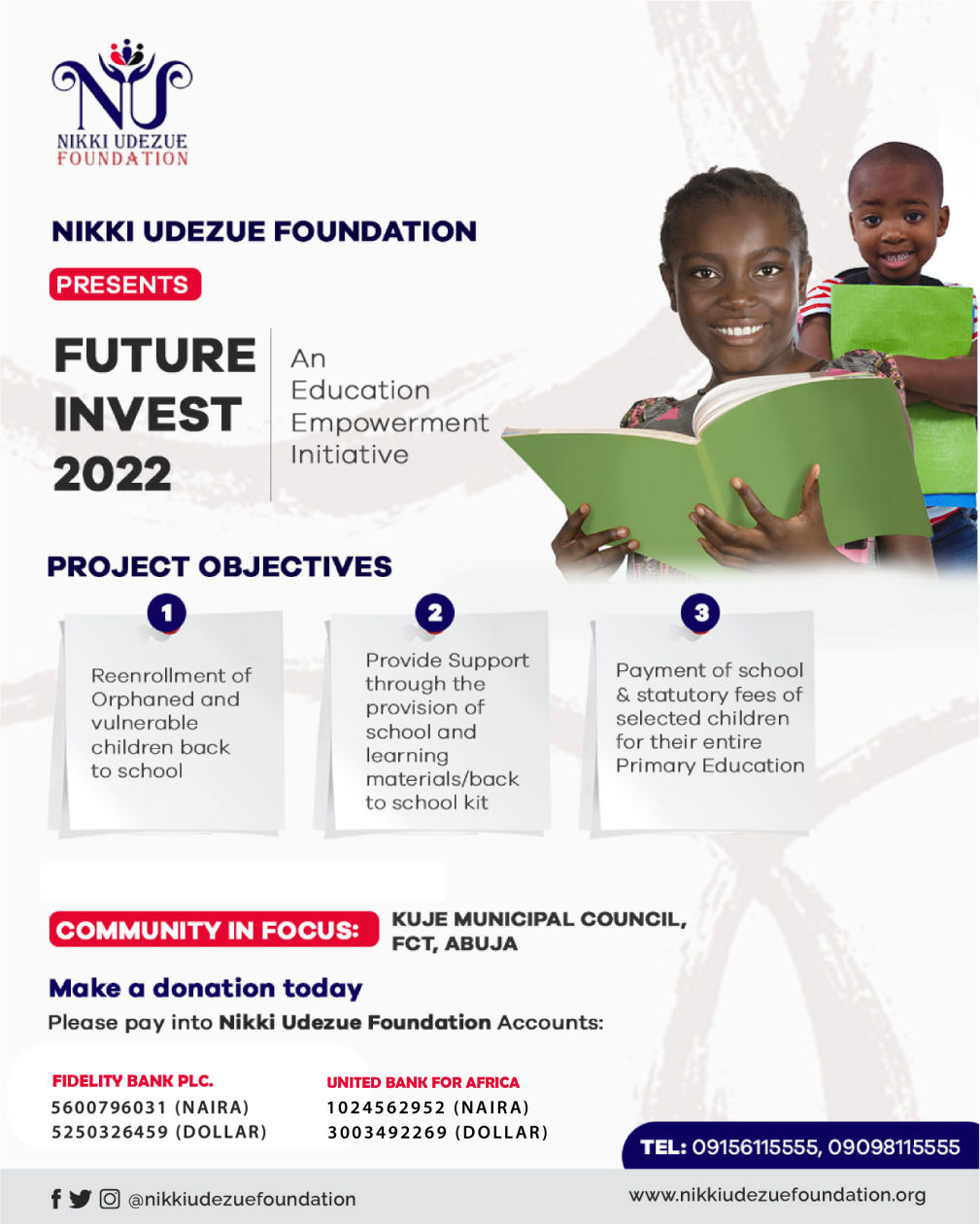

PROJECT SUMMARY
NUF is seeking to elevate the underprivileged children and youth empowerment for the girl child in a bid to improve the skills and educational level to help increase the self-worth, reduce their vulnerability and improve their living conditions.
CHALLENGE
Even though primary education is officially free and compulsory, about 10.5 million of the country’s children aged 5-14 years are not in school. Only 61 percent of 6–11 year-olds regularly attend primary school and only 35.6 percent of children aged 36-59 months receive early childhood education.
In the north of the country, the picture is even bleaker, with a net attendance rate of 53 percent. Getting out-of-school children back into education poses a massive challenge.
Gender, like geography and poverty, is an important factor in the pattern of educational marginalization. States in the north-east and north-west have female primary net attendance rates of 47.7 percent and 47.3 percent, respectively, meaning that more than half of the girls are not in school. The education deprivation in northern Nigeria is driven by various factors,
including economic barriers and socio-cultural norms and practices that discourage attendance in formal education, especially for girls.
UNICEF programme advocates for education to be prioritised and targets children who are least likely to receive an education. The expected outcome of the programme is that all children access and complete quality education, within a safe learning environment, gaining the skills and knowledge for lifelong learning. This work will be achieved by creating an enabling environment for education, improving the quality of education, increasing demand for education, and humanitarian assistance, including through ensuring:
The education system at federal and state levels has strengthened capacities to deliver quality basic education.
More teachers have core knowledge and competencies to use proven teaching methodologies to deliver appropriate quality education.
Parents and communities have improved knowledge and commitment to contribute to enrolling children at the right age in quality learning in safe protective school environment.
Children in humanitarian situations have timely and sustained access to quality education services.
TARGET AREA AND BENEFICIARIES
As presented Above, Vulnerable children. Especially the out of school child numbers are considered amongst the highest numbers. This project seeks to help elevate the underprivileged children, improve their self-esteem and self-worth.
The program is in its pilot phase and will target 20 vulnerable children out of school within the primary and secondary school level. And a skill acquisition for 10 girl children within the ages of 16-30years.
GOAL
To help promote excellence and merit among school learners and students both in primary, secondary institutions
To help donate educational materials to indigent children in the society.
To help advocate for the rights of the girl child and downtrodden.
OUTCOMES
Equip the vulnerable children with basic education
To empower the girl child with skills that help to ensure financial growth and sustainability.
DURATION
The project is planned to be implemented over one year period that will extend into the next year with monitoring monthly. Hence the project will be a 52 weeklong project, starting from 14th February 2022 to the 14th of February 2023.
APPROACH.
The project will adopt the Consciousness raising and organizing approach which emphasizes on sensitizing the vulnerable people on the number of factors that can affect their lifestyle, access to socio economic opportunities and how they can overcome these.
Also, the economic development aspect that puts skill into finances for the overall growth and sustainability of the individual and others around them.
Summarily, the initiative will organize a one-day sensitization and awareness event for the orphans and vulnerable children on educational growth also, the need for the girl child to be empowered through education and skill acquisition.
Successful participants will be awarded fundings for schooling, school materials, school bags and a certificate of participation.
Over the course of the months ahead they will be monitored, mentored, guided, and assessed accordingly.
MONITORING AND EVALUATION
The project will be monitored using a participatory evidence-based approach. It will document using quantitative and qualitative methods, the outputs and track the outcomes of the project.
The following are the expected outputs and outcomes of the project:
Output 1. Number of Orphans/Vulnerable children (OVC) trained on educational upliftment
Output 2. Number of OVC supported to start small schooling or skill learning.
Outcome 1: Number of OVCs who started schooling and stayed focused after being supported.
Outcome 2: percentage of OVCs who report improved in their skill acquisition, uplifting their life and others around them.
Outcome 3: Percentage of OVCs who report improved in their educational history.
Put a smile on the face of a less privileged today, make a Donation.